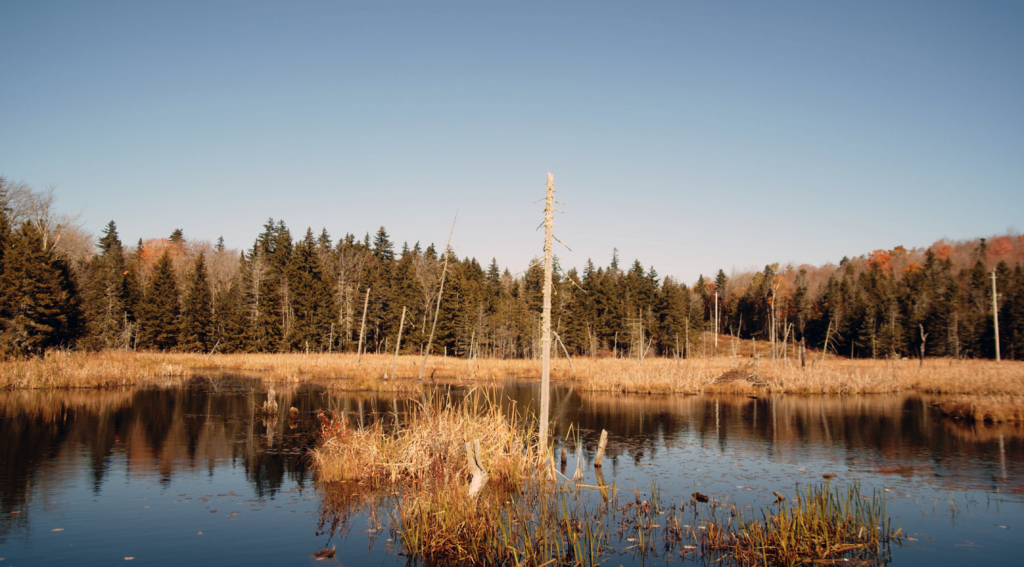Stick Season
Vermonters joke about having more than four seasons. Stick season is one of those seasons. It starts somewhere between fall and winter; around late October to early December. It is the time of year after the last leaves of the deciduous trees have fallen and before measurable snow. A time in between the summer and winter sports. The days are getting shorter, nights longer. A time before the ground is frozen solid.
The skies turn gray, the landscape has faded from the lush summer greens, past the vibrant fall reds and yellows to muted grays and browns.
Stick Season is the time of year when most seasonal visitors return home. It’s a time for many locals to catch their breath between the busy summer and winter seasons. Those who were busy providing a service to the summer crowds are taking a well-earned break between seasons. Some businesses completely close down for a few weeks while others may just reduce their hours.
Property maintenance companies exchange their lawn mowers, rakes, and weed whackers for snow plows and shovels. Home owners mow their lawns one final time, put away lawn and deck furniture, and drain garden hoses. Anything left outside after the first snowfall usually remains there until the spring when the snows melt.
Ski areas transition from their summer activities and gear up for winter. The summer signs are pulled off the mountains, the ski lifts are worked on, and snowmaking guns are checked and serviced.
It’s an underrated time of year. For those who still want to get outside and enjoy nature, there are still options. While the lakes may not be conducive to swimming, it’s a great time of year to kayak or canoe.
Hiking is still a great option. During this time of year views that in the summer with full foliage are hidden, are revealed. Hikers though need to be aware of hunting regulations when venturing into the woods. Be sure to check Vermont Fish and Wildlife for updated hunting and fishing regulations and seasons, and be sure to wear bright colors.
Leaf-strewn trails are another factor to consider when hiking. Wet and slippery leaves can cover rocks and roots. Keep an eye out for the trail markers as leaves can cover the trails.
For those of you who are bird watchers, stick season provides an opportunity to spot the bird you have been hearing chirping. Keep an eye out for vacant birdnest in the tree’s branches. You may even see a paper wasp’s nest. Be aware that the wasps are most likely still inside.
For me, this time of year always signaled that it was time to bring in the firewood. As kids, my siblings and I would pile into the wood trailer. Dad fired up the old Ford 8N and we clung to the sides as the trailer bounced over roots and rocks to the many stacks of wood in the woods behind our house. Dad pulled up to a woodpile, we hopped out and began tossing wood into the wagon. Once it was full we’d race Dad back to the house. We always won. Dad backed the trailer up to the woodshed, then we’d unload and stack the wood. We’d fill the woodshed for the stove in the Big Shed and then the cellar; two piles there, one for the kitchen stove at 15 inches, and one for the cellar stove at 24 inches. We used eight or nine cords over the winter, which equaled more than 30 trips back and forth with the tractor and trailer. It was rewarding work watching the stacks disappear from the woods, and seeing the full woodshed.
Anyone who heats with wood can relate to the quote attributed to Henry Ford. “Chop your own wood and it will warm you twice. I respectfully disagree. I think it warms you much more than that!
What else is there to do for those who are not fans of being outside during this time of year? I am a fan of Covered bridges and there are several only a short drive away.
Johnny Esau: Located at Marlboro School. Made by the school students after studying bridge construction.
Creamery Bridge: West Brattleboro: Located off Route 9 and worth parking to walk across.
West Dummerston Bridge: spans the West River and is the longest bridge entirely in the state of Vermont.
Williamsville Bridge: Newfane
Scott Bridge, Townshend off Rt. 30: This one is worth parking and walking across as well.
Written by Bridget Cole. Bridget grew up in Wilmington. After spending a few decades in New York and Colorado, she is currently back in Southern Vermont. She is a former dairy farmer and current educator. She enjoys hiking and biking and being outdoors.
